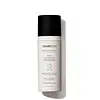What's inside
What's inside
 Key Ingredients
Key Ingredients

 Benefits
Benefits

 Concerns
Concerns

 Ingredients Side-by-side
Ingredients Side-by-side

Water
Skin ConditioningDimethicone
EmollientGlycerin
HumectantCetearyl Olivate
Polyacrylamide
Sorbitan Olivate
EmulsifyingPhenoxyethanol
PreservativeDimethicone/Vinyl Dimethicone Crosspolymer
Skin ConditioningSynthetic Beeswax
Emulsion StabilisingC13-14 Isoparaffin
EmollientDimethicone Crosspolymer
Emulsion StabilisingTrehalose
HumectantDimethiconol
EmollientChlorphenesin
AntimicrobialYeast Extract
Skin ConditioningCarbomer
Emulsion StabilisingLaureth-7
EmulsifyingSodium Hyaluronate
HumectantEthylhexylglycerin
Skin ConditioningSodium Hydroxide
BufferingC12-14 Pareth-12
EmulsifyingWater, Dimethicone, Glycerin, Cetearyl Olivate, Polyacrylamide, Sorbitan Olivate, Phenoxyethanol, Dimethicone/Vinyl Dimethicone Crosspolymer, Synthetic Beeswax, C13-14 Isoparaffin, Dimethicone Crosspolymer, Trehalose, Dimethiconol, Chlorphenesin, Yeast Extract, Carbomer, Laureth-7, Sodium Hyaluronate, Ethylhexylglycerin, Sodium Hydroxide, C12-14 Pareth-12
Butyl Methoxydibenzoylmethane 3%
UV AbsorberOctocrylene 2.75%
UV AbsorberEthylhexyl Salicylate 5%
UV AbsorberWater
Skin ConditioningButyloctyl Salicylate
Skin ConditioningGlycerin
HumectantHelianthus Annuus Seed Oil
EmollientDimethicone
EmollientZea Mays Oil
EmulsifyingPolyester-8
Skin ConditioningCoco-Caprylate/Caprate
EmollientPolysilicone-15
UV FilterSodium Stearoyl Glutamate
CleansingPanthenol
Skin ConditioningVitis Vinifera Callus Culture Extract
Sodium Ascorbyl Phosphate
AntioxidantCamellia Sinensis Leaf Extract
AntimicrobialAloe Barbadensis Leaf Extract
EmollientCaffeine
Skin ConditioningProline
Skin ConditioningPhytosphingosine
Skin ConditioningCeramide AP
Skin ConditioningCeramide EOP
Skin ConditioningCeramide NP
Skin ConditioningSodium Hyaluronate
HumectantAllantoin
Skin ConditioningChamomilla Recutita Extract
Skin ConditioningNiacinamide
SmoothingTremella Fuciformis Extract
HumectantMacadamia Integrifolia Seed Oil
Skin ConditioningOlea Europaea Fruit Oil
MaskingRosa Moschata Seed Oil
EmollientLavandula Angustifolia Oil
MaskingDiatomaceous Earth
AbrasiveLaminaria Digitata Extract
Skin ProtectingFerric Hexapeptide-35
Skin ConditioningMelaleuca Alternifolia Leaf Oil
AntioxidantCaprylic/Capric Triglyceride
MaskingCaprylyl Glycol
EmollientSodium Polyacrylate
AbsorbentSesamum Indicum Seed Oil
EmollientRosmarinus Officinalis Leaf Extract
AntimicrobialTeprenone
Skin ConditioningLecithin
EmollientMica
Cosmetic ColorantSorbitol
HumectantAcrylates/C10-30 Alkyl Acrylate Crosspolymer
Emulsion StabilisingCaprylhydroxamic Acid
Ethylhexylglycerin
Skin ConditioningCholesterol
EmollientCarbomer
Emulsion StabilisingXanthan Gum
EmulsifyingSodium Lauroyl Lactylate
EmulsifyingSodium Hydroxide
BufferingTbhq
AntioxidantPhenylpropanol
MaskingCI 77891
Cosmetic ColorantButyl Methoxydibenzoylmethane 3%, Octocrylene 2.75%, Ethylhexyl Salicylate 5%, Water, Butyloctyl Salicylate, Glycerin, Helianthus Annuus Seed Oil, Dimethicone, Zea Mays Oil, Polyester-8, Coco-Caprylate/Caprate, Polysilicone-15, Sodium Stearoyl Glutamate, Panthenol, Vitis Vinifera Callus Culture Extract, Sodium Ascorbyl Phosphate, Camellia Sinensis Leaf Extract, Aloe Barbadensis Leaf Extract, Caffeine, Proline, Phytosphingosine, Ceramide AP, Ceramide EOP, Ceramide NP, Sodium Hyaluronate, Allantoin, Chamomilla Recutita Extract, Niacinamide, Tremella Fuciformis Extract, Macadamia Integrifolia Seed Oil, Olea Europaea Fruit Oil, Rosa Moschata Seed Oil, Lavandula Angustifolia Oil, Diatomaceous Earth, Laminaria Digitata Extract, Ferric Hexapeptide-35, Melaleuca Alternifolia Leaf Oil, Caprylic/Capric Triglyceride, Caprylyl Glycol, Sodium Polyacrylate, Sesamum Indicum Seed Oil, Rosmarinus Officinalis Leaf Extract, Teprenone, Lecithin, Mica, Sorbitol, Acrylates/C10-30 Alkyl Acrylate Crosspolymer, Caprylhydroxamic Acid, Ethylhexylglycerin, Cholesterol, Carbomer, Xanthan Gum, Sodium Lauroyl Lactylate, Sodium Hydroxide, Tbhq, Phenylpropanol, CI 77891
Ingredients Explained
These ingredients are found in both products.
Ingredients higher up in an ingredient list are typically present in a larger amount.
Carbomer is a polymer of acrylic acid. Its main role is to create a gel consistency.
A high amount of carbomer can cause pilling or balling up of products. Don't worry, most products contain 1% or less of carbomer.
Dimethicone is a type of synthetic silicone created from natural materials such as quartz.
What it does:
Dimethicone comes in different viscosities:
Depending on the viscosity, dimethicone has different properties.
Ingredients lists don't always show which type is used, so we recommend reaching out to the brand if you have questions about the viscosity.
This ingredient is unlikely to cause irritation because it does not get absorbed into skin. However, people with silicone allergies should be careful about using this ingredient.
Note: Dimethicone may contribute to pilling. This is because it is not oil or water soluble, so pilling may occur when layered with products. When mixed with heavy oils in a formula, the outcome is also quite greasy.
Learn more about DimethiconeEthylhexylglycerin (we can't pronounce this either) is commonly used as a preservative and skin softener. It is derived from glyceryl.
You might see Ethylhexylglycerin often paired with other preservatives such as phenoxyethanol. Ethylhexylglycerin has been found to increase the effectiveness of these other preservatives.
Glycerin is already naturally found in your skin. It helps moisturize and protect your skin.
A study from 2016 found glycerin to be more effective as a humectant than AHAs and hyaluronic acid.
As a humectant, it helps the skin stay hydrated by pulling moisture to your skin. The low molecular weight of glycerin allows it to pull moisture into the deeper layers of your skin.
Hydrated skin improves your skin barrier; Your skin barrier helps protect against irritants and bacteria.
Glycerin has also been found to have antimicrobial and antiviral properties. Due to these properties, glycerin is often used in wound and burn treatments.
In cosmetics, glycerin is usually derived from plants such as soybean or palm. However, it can also be sourced from animals, such as tallow or animal fat.
This ingredient is organic, colorless, odorless, and non-toxic.
Glycerin is the name for this ingredient in American English. British English uses Glycerol/Glycerine.
Learn more about GlycerinSodium Hyaluronate is hyaluronic acid's salt form. It is commonly derived from the sodium salt of hyaluronic acid.
Like hyaluronic acid, it is great at holding water and acts as a humectant. This makes it a great skin hydrating ingredient.
Sodium Hyaluronate is naturally occurring in our bodies and is mostly found in eye fluid and joints.
These are some other common types of Hyaluronic Acid:
Learn more about Sodium HyaluronateSodium Hydroxide is also known as lye or caustic soda. It is used to adjust the pH of products; many ingredients require a specific pH to be effective.
In small amounts, sodium hydroxide is considered safe to use. However, large amounts may cause chemical burns due to its high alkaline.
Your skin has a natural pH and acid mantle. This acid mantle helps prevent harmful bacteria from breaking through. The acid mantle also helps keep your skin hydrated.
"Alkaline" refers to a high pH level. A low pH level would be considered acidic.
Learn more about Sodium HydroxideWater. It's the most common cosmetic ingredient of all. You'll usually see it at the top of ingredient lists, meaning that it makes up the largest part of the product.
So why is it so popular? Water most often acts as a solvent - this means that it helps dissolve other ingredients into the formulation.
You'll also recognize water as that liquid we all need to stay alive. If you see this, drink a glass of water. Stay hydrated!
Learn more about Water